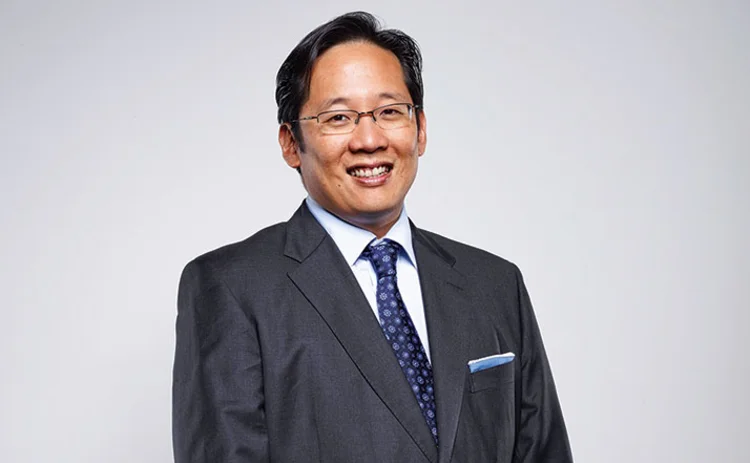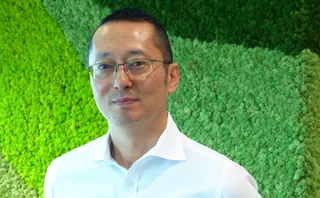
Derivatives exchange of the year: SGX
Asia Risk Awards 2017

Idiosyncratic risks are on the rise – not only across regions but also between asset classes. This means that it is becoming increasingly important for companies to be able to precisely hedge their value and supply chain. The Singapore Exchange retains its position as Asia Risk Derivatives Exchange of the Year for strengthening its vertical business lines, at the same time as continuing to diversify and broaden its horizontals.
“Over the past 12 to 18 months we have hit peak globalisation. Capital and trade barriers are heading up. There is no barrier that we see coming down. This means more idiosyncratic risk,” says Michael Syn, head of derivatives at the exchange.
In anticipation of this trend, SGX has worked hard to strengthen its offering in steel raw materials, adding value to customers who want to be able to hedge the entire value chain. Futures for coking coal – the fuel that is used in the production of steel – were launched at the end of 2014, but it wasn’t until October 2016 that the exchange introduced market-making capabilities to the commodity class.
Syn says that, since then, SGX has managed to grab 99% of market share. He also says 2017 was the year that SGX broke the record for futures traded on seaborne coking coal: the equivalent of 11 million tonnes in the first nine months alone.
The exchange has also introduced margin offsets between iron ore and coking coal, making it highly efficient for the market to participate in the steel value chain, and more recently also launched its first coking coal options.
“For anyone that makes their living through the steel mill – that is anyone who trades in iron ore or coking coal, imports or exports the finished steel product, or ships these things around – this idiosyncratic risk becomes a very real thing, and they need to be able to hedge the entire supply chain in order to maintain margins. You can now do this with us,” explains Syn.
As a result of the stronger steel verticals, as well as current market sentiment, SGX was able to trade 1.6 million iron ore derivatives during the 2017 financial year.
As well as developing existing products, SGX is also looking to diversify into new areas.
“Our belief is that what has been happening in the US in terms of composite investing will also make it over to Asia,” says Syn. “If you told your execution trader to go long Asia, he might buy Nikkei or Hang Seng, but these days the idiosyncratic risk between Japanese and Chinese equities has increased and this has awakened a spark of interest in composite investing. We have already built up the liquidity in forex and equities, for example, and uniquely offer margin offsets between them. This can get composite investing going.”
One key landmark event in the evolution of SGX this year was its successful acquisition of the London-based Baltic Exchange, which handles the trading and settlement of both physical and derivative contracts relating to shipping and maritime transportation. This acquisition helped strengthen SGX’s offering for hedging the production of steel, since the cost of freight is a key determinant in the price of iron ore. However, Syn says this wasn’t the only motivation in buying the London-based exchange.
“If all the Baltic Exchange had offered was a chance to strengthen our vertical lines, I think we would have been very careful,” says Syn. “We decided to proceed with the acquisition because we understood that if we were to have a very significant presence in London it would help us in strengthening and expanding the exchange. With this purchase, we have a brand that in Europe is stronger than SGX, with very deep relationships and a history that is fundamental to commodity trading in Europe.”
SGX’s successes over the past 12 months have been further complemented by the launch in September 2016 of its over-the-counter technology platform known as Titan, which allows clearing members to directly register trades and manage credit risk. SGX has made the platform available to a diverse spectrum of traders and across asset classes, which was no easy task, explains Syn.
“To be able to have a consortium of users that are as different as Nikkei option brokers, trading firms and iron ore brokers – and to be able to satisfy their needs by delivering common functionality – was a real achievement,” he says.
The exchange set up a consortium of users to provide regular feedback as the system was being developed and to see where common functionality made sense.
“We asked members, ‘what would you like next? What do you think is useful for you?’, and I think people were very pleased to see an exchange being so responsive to client feedback,” says Syn. “Once you have reached the maximum frontier of what can be thought of as common, you need engagement to persuade the industry to change its workflow. And that’s also not easy.”
Only users who have a paid subscription or are part of a corporate subscription are able to print or copy content.
To access these options, along with all other subscription benefits, please contact info@risk.net or view our subscription options here: http://subscriptions.risk.net/subscribe
You are currently unable to print this content. Please contact info@risk.net to find out more.
You are currently unable to copy this content. Please contact info@risk.net to find out more.
Copyright Infopro Digital Limited. All rights reserved.
You may share this content using our article tools. Printing this content is for the sole use of the Authorised User (named subscriber), as outlined in our terms and conditions - https://www.infopro-insight.com/terms-conditions/insight-subscriptions/
If you would like to purchase additional rights please email info@risk.net
Copyright Infopro Digital Limited. All rights reserved.
You may share this content using our article tools. Copying this content is for the sole use of the Authorised User (named subscriber), as outlined in our terms and conditions - https://www.infopro-insight.com/terms-conditions/insight-subscriptions/
If you would like to purchase additional rights please email info@risk.net
More on Awards
Joining the dots: banks leverage tech advancements for the future of regulatory reporting
The continued evolution of regulatory frameworks is creating mounting challenges for capital markets firms in achieving comprehensive and cost-effectiveawa compliance reporting. Regnology discusses how firms are starting to use a synthesis of emerging…
Markets Technology Awards 2024 winners' review
Vendors spy opportunity in demystifying and democratising – opening up markets and methods to new users
Derivatives house of the year: JP Morgan
Risk Awards 2024: Response to regional banking crisis went far beyond First Republic
Risk Awards 2024: The winners
JP Morgan wins derivatives house, lifetime award for El Karoui, Barclays wins rates
Best product for capital markets: Murex
Asia Risk Awards 2023
Technology vendor of the year: Murex
Asia Risk Awards 2023
Best structured products support system: Murex
Asia Risk Awards 2023
Energy Risk Asia Awards 2023: the winners
Winning firms demonstrate resiliency and robust risk management amid testing times
Most read
- Top 10 operational risks for 2024
- The American way: a stress-test substitute for Basel’s IRRBB?
- Filling gaps in market data with optimal transport







